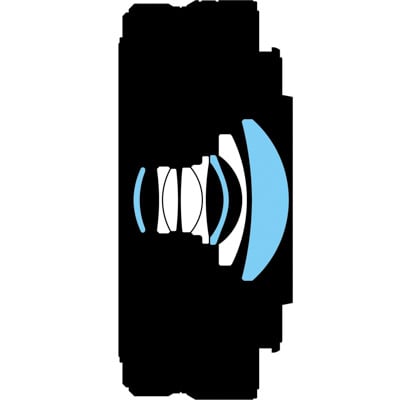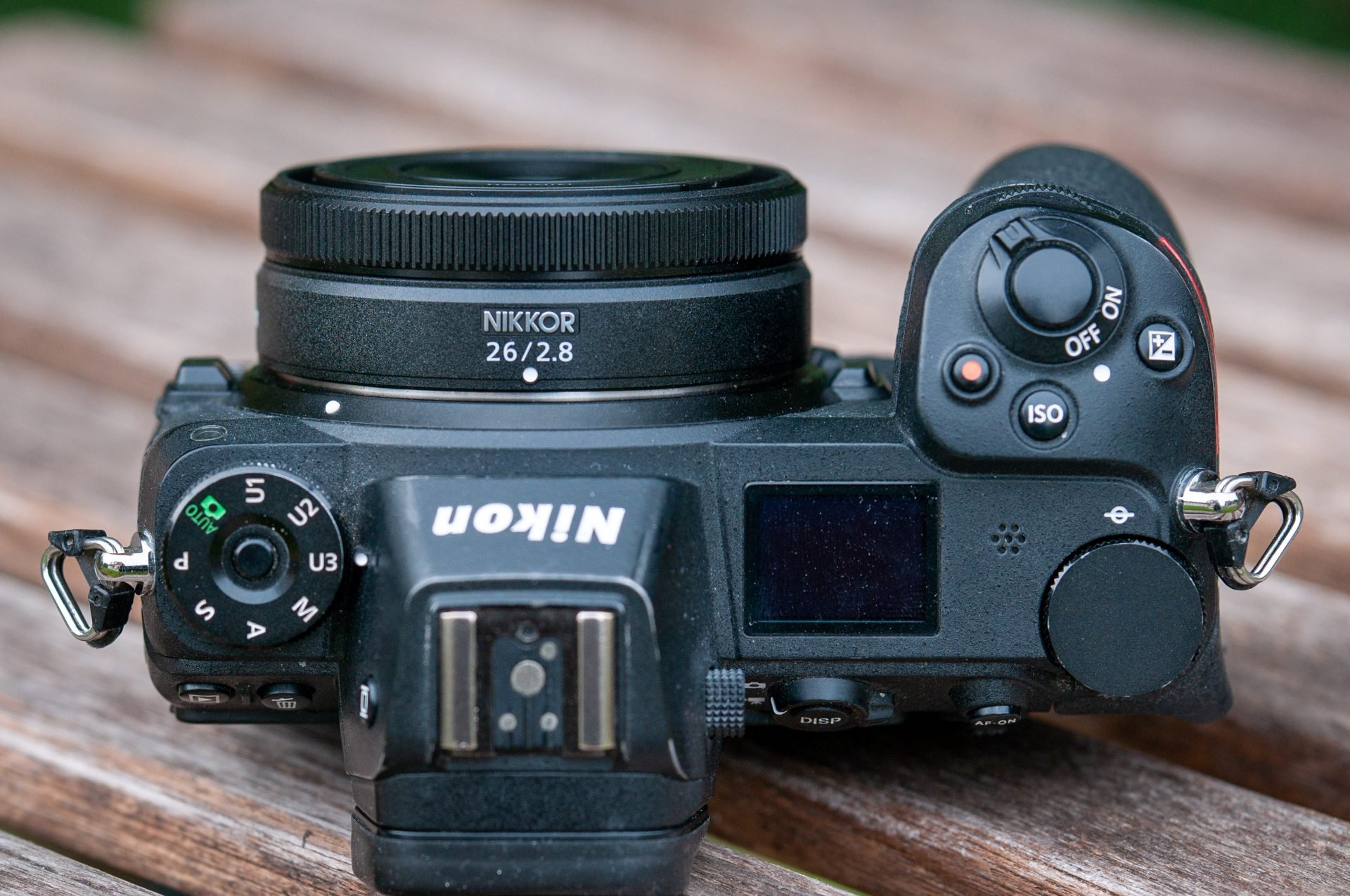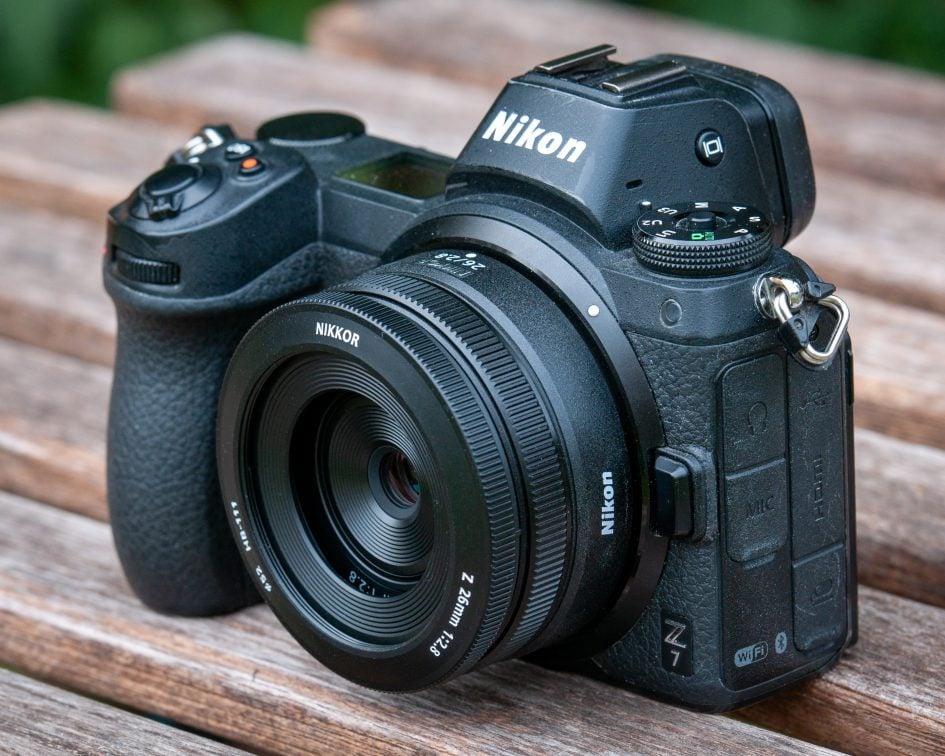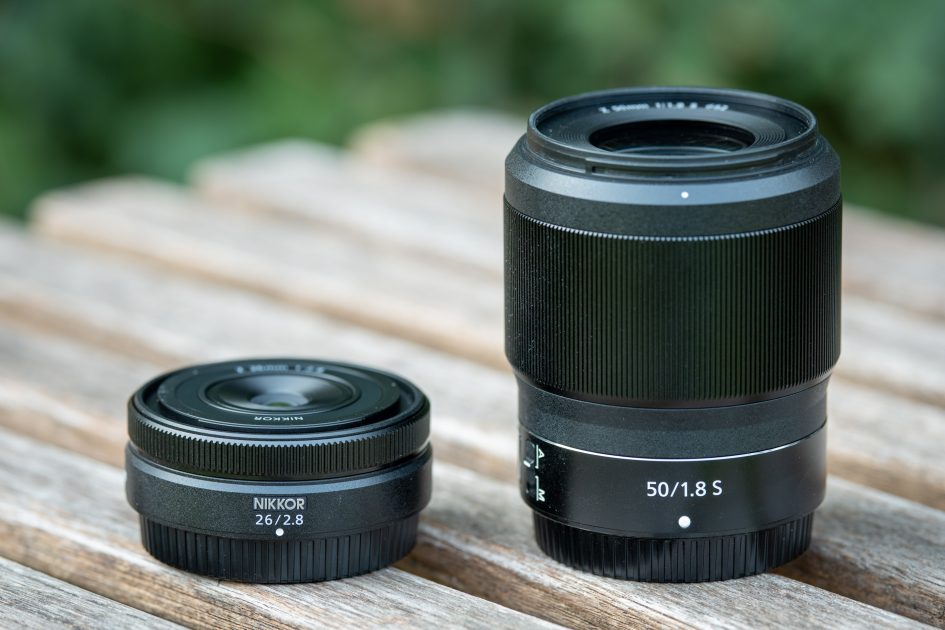Nikon Z 26mm f2.8 review
-
-
Written by Thomas
Intro
The Z 26mm f2.8 is Nikon’s smallest and lightest Z-Nikkor to date, a true “pancake” lens. It is corrected for full-frame sensors where it covers a wide angle-of-view of 80 degrees, while on a cropped/DX body the lens is equivalent to 39mm focal length, giving a view which is slightly wider than a so-called “normal” lens. The Z 26mm f2.8 was announced in February 2023, is made in Thailand, and costs 589 EUR / 497 USD / 529 GBP. In Nikon’s lens line-up for Z-mount cameras the Z 26mm f2.8 is slotted between their Z 24mm f1.8 S which is much bigger and twice as expensive and the Z 28mm f2.8 which is a relatively small lens and only costs half of the Z 26mm f2.8.
Facts and features
Let’s compare the Nikon Z 26mm f2.8 to Nikon’s Z 28mm f2.8, Z 24mm f1.8 S and Z 24-50mm f4-6.3. As usual I’ve rated the features with a [+] (or [++]), when it’s better than average or even state of the art, a [0] if it’s standard or just average, and [-] if there’s a disadvantage.
Size (diameter x length): 70 x 25mm (2.8 x 1.0in.) plus 9mm for the tiny lens hood. The inner barrel of the lens extends up to 6mm when focusing closer. So I’d recommend leaving the lens hood attached as it prevents the inner barrel to be pressed back if you try to attach the front lens cap when the camera is switched on. The Z 28mm f2.8 is 71 x 44mm with no lens hood to attach. The Z 24mm f1.8 S is much bigger at 78 x 97mm + 34 mm lens hood, the Z 24-50mm f4-6.3 is 73 x 51mm in its collapsed state w/o lens hood and extends to 75mm operating length. So the new 26mm Z-Nikkor is indeed the shortest full-frame lens with autofocus to use on a Nikon Z camera to date. It’s also shorter than lenses from Sony or Canon. [++]
Weight: 122g (4.3 oz.) plus 14g for the lens hood. Z 28mm f2.8 is 157g w/o lens hood, the Z 24mm f1.8 S is 447g + 23g lens hood, the Z 24-50mm f4-6.3 is 364g + 30g lens hood. This makes the Z 26mm f2.8 also the lightest lens in this comparison but the difference between the Z 26mm and Z 28mm is not really noticeable when mounted on a camera. [+]

Optics: 8 elements in 6 groups including three aspherical element. The Z 28mm f2.8 has 9 elements in 8 groups, the Z 24mm f1.8 S is a 12/10 design, the Z 24-50mm f4-6.3 is 11/9. Only the Z 24mm f1.8 S has Nikon’s Nano-Coating to reduce flare, glare and ghosting. [+]
Minimum object distance / maximum magnification: In manual focus I was able to get down to 0.18m (0.6ft.) distance with a maximum magnification of 1:4.7 – which is not much and results in a working distance of 0.14m. The Z 28mm f2.8 and Z 24-50mm f4-6.3 achieve a similar magnification – the zoom lens with a slightly better working distance of 0.22m. The Z 24mm f1.8 S goes only down to 1:5.7. The Z 26mm f2.8 achieves a magnification of 1:10 at a distance of 0.33m. [+]
Image stabilization: None of the four lenses in this comparison offers optical stabilization. But Nikon’s full-format Z bodies provide built-in sensor-shift stabilization over 5 axis for any Z-Nikkor – plus an optional electronic stabilization in video mode. Just be aware that Nikon’s Z cropped sensor/DX cameras currently only offer electronic stabilization in video mode. [0]
Filter-thread: There’s no filter thread on the lens but you can attach 52mm filters on the lens hood. The Z 28mm f2.8 also needs 52mm filters, the Z 24mm f1.8 S 72mm filters, the Z 24-50mm f4-6.3 62mm filters. [+]
Autofocus: All four lenses in this comparison offer autofocus. Manual-focus override is by simply turning the control ring – if MF is assigned to it. [+]
Aperture ring and other control elements: The multi-function control ring of all Z Nikkors can be assigned to operate the aperture, exposure compensation, ISO or focus. Only the Z 24mm f1.8 S has an AF/MF switch. [+]
Lens profile: All Z-Nikkors come with a lens profile which can be controlled from the camera. Vignette control offers the usual options of High, Normal, Low and Off. Diffraction compensation can be activated or deactivated on all four lenses but Auto distortion control is always On – except for the Z 24mm f1.8 S. [+]
All four lenses in this comparison cover full frame/FX or smaller sensors. [+]
Price: 589 EUR (incl. 19% VAT) / 497 USD / 529 GBP. The Z 28mm f2.8 is much cheaper at 260 EUR / 280 USD / 260 GBP. The Z 24mm f1.8 S is 990 EUR / 1000 USD / 1010 GBP, the Z 24-50mm f4-6.3 costs 350 EUR / 400 USD / 400 GBP. [0]
The lens comes without pouch but the lens hood is included. It is a bit fiddly to mount but offers a filter thread and protects the inner lens barrel from being pushed back by the lens cap. The Z 28mm f2.8 and Z 24-50mm f4-6.3 both come without pouch or lens hood. Only the Z 24mm f1.8 S comes with a soft pouch and reversible lens hood. [0]
Sealing: Yes, the lens has the usual sealing against the elements including a rubber grommet at the metal lens-mount just like the Z 24mm f1.8 S. Both the Z 28mm f2.8 and Z 24-50mm f4-6.3 only have plastic lens mounts w/o rubber grommet and the zoom lens does not have any sealing. [+]
With a score of 0[-]/3[0]/11[+] the Nikon Z 26mm f2.8 looks like a well featured lens with the unique advantage of being even smaller and lighter than the diminutive Z 28mm f2.8 – or any mirrorless full-frame AF lens from Sony or Canon. It is not exactly cheap: In fact it costs twice as much as the Z 28mm f2.8 but that lens has only a cheap plastic lens mount without weather sealing and does not come with a lens hood.
Above: Nikon Z 26mm f2.8 (left), Nikon Z 50mm f1.8 S (right)
Focus
Focus accuracy and repeatability is critical to consistently produce sharp shots. Repeatability (the accuracy of focus on the same subject after repeated focus-acquisition) of the Nikon Z 26mm f2.8 is very good (measured 99,4% in Reikan FoCal) with no outliers over a series of 40 shots. There is no focus variation whether the lens focuses from a closer distance or from infinity and the lens focuses in around 0.5 sec on a Nikon Z7 from infinity to 0.18m (1:10 magnification), which is as fast as the Z 24mm f1.8 S but slower than the Z 28mm f2.8 or Z 24-50mm.
The focus/control ring is 8mm wide. It has no rubberized surface but moves super smooth and can easily be operated even with your pinky. AF-operation of the lens in both photo- and video-mode is clearly audible: This is the loudest Z-Nikkor I’ve tested so far. To avoid the noticeable buzz when recording video you better use an external microphone.
As you pull focus, you’ll notice quite some focus breathing: the image became 11% more magnified when I adjusted focus from infinity to 0.18m. This is very visible and could be distracting when shooting videos.
Next check out my quality results!
Check prices on the Nikon Z 26mm f2.8 at B&H, Adorama, WEX UK or Calumet.de. Alternatively get yourself a copy of my In Camera book, an official Cameralabs T-shirt or mug, or treat me to a coffee! Thanks!
 Nikon’s Z 26mm f2.8 is the smallest and lightest autofocus lens for Z-mount to date. It is corrected for full-frame sensors and produces very sharp images in the center at any object distance even wide open. But for satisfying corner sharpness you need to stop down a bit – which also helps reduce the very strong vignetting. Another quirk is the noisy focus drive. But if you want the smallest and lightest I can fully recommend this lens. Still, consider the Z 28mm f2.8 as a slightly larger and heavier alternative – at half the price.
Nikon’s Z 26mm f2.8 is the smallest and lightest autofocus lens for Z-mount to date. It is corrected for full-frame sensors and produces very sharp images in the center at any object distance even wide open. But for satisfying corner sharpness you need to stop down a bit – which also helps reduce the very strong vignetting. Another quirk is the noisy focus drive. But if you want the smallest and lightest I can fully recommend this lens. Still, consider the Z 28mm f2.8 as a slightly larger and heavier alternative – at half the price.






